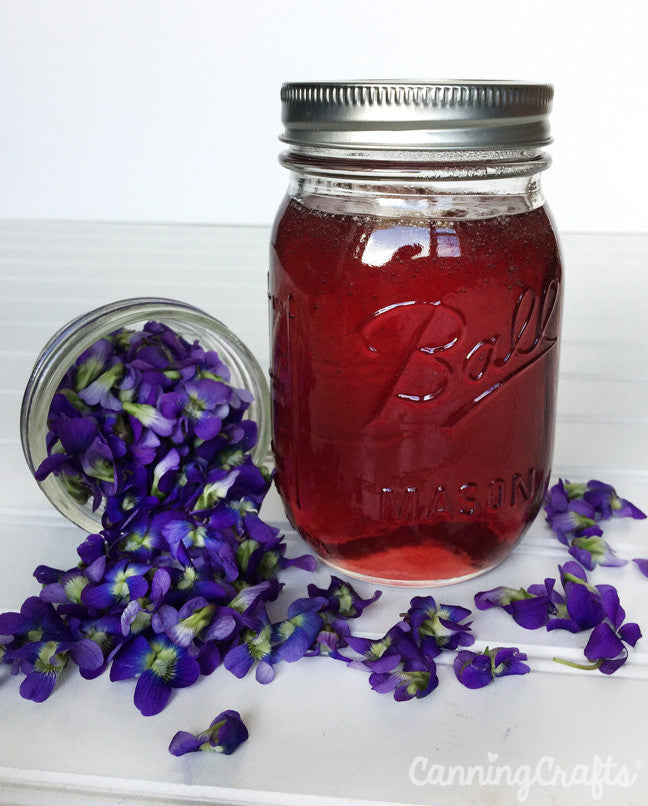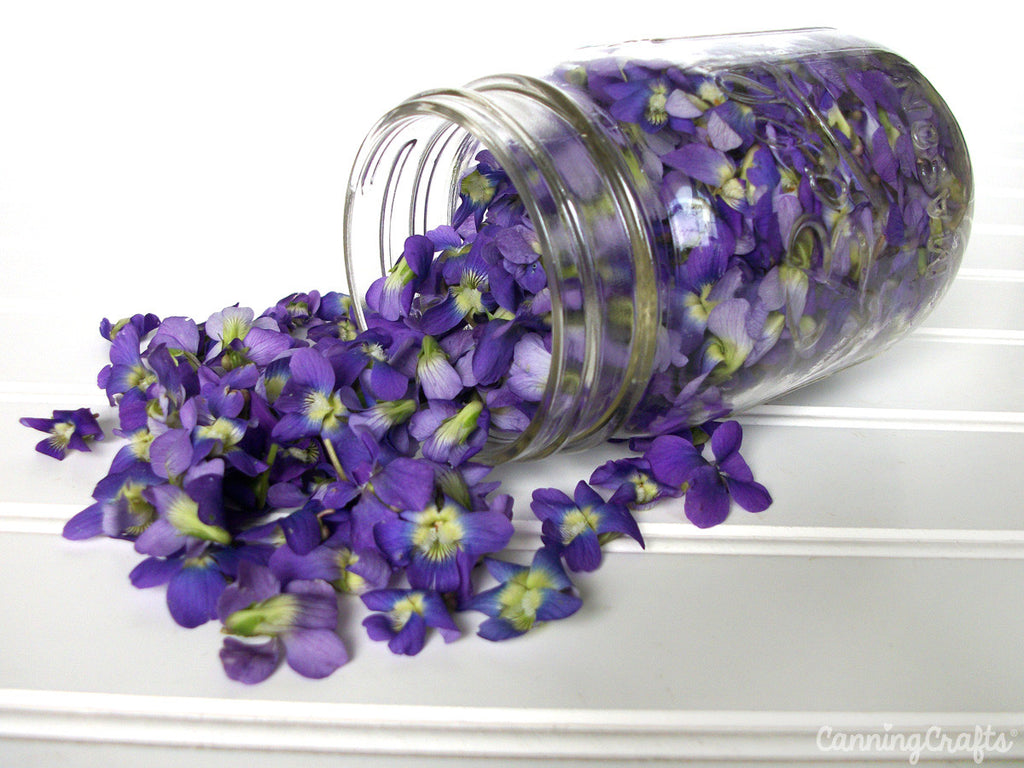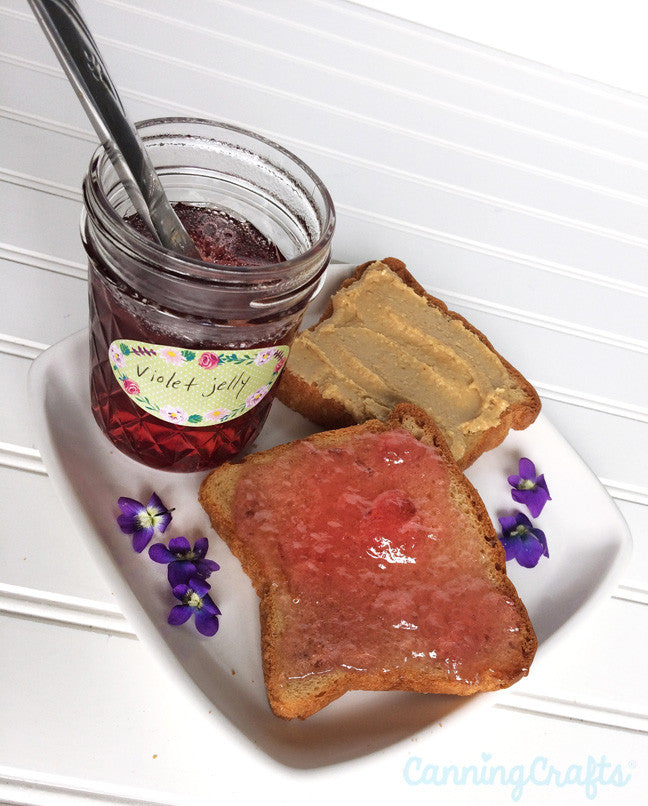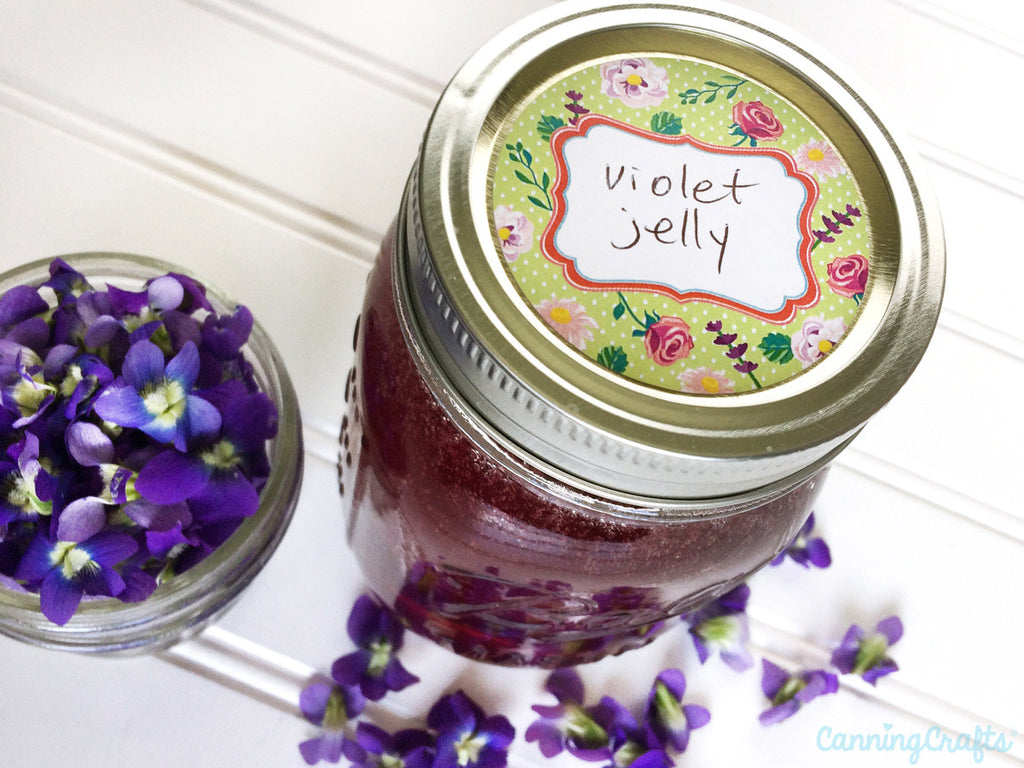Our backyard was overflowing with violets, so I thought I would try this awesome Violet Jelly recipe from Bakers Brigade. Of course I'd heard of Dandelion Jelly, but I hadn't seen a recipe for Violet Jelly before.

I was really interested in the "magical color change" this food blogger spoke about. After collecting violets in a jar, you pour boiling water onto them. Then let the jar sit overnight to infuse and create a lovely sapphire blue "tea". When you strain out the flowers and add lemon juice, the dark blue tea turns purple. WOW! Just take a look at Bakers Brigade's cool color changing video or our time-lapse video.


The resulting jelly is very sweet with a subtle floral taste. And the color is simply amazing! Who knew flowers could taste so good? If you have an abundance of these beautiful purple flowers in your yard, go pick them now! Violets are unlike dandelions, they won't last all season in your yard. Wild violets are typically found May through June in most areas (zones 3 through 9).

If you don't want to make jelly, you'll be happy to know there are plenty of other violet recipes to try.
Violet Recipes:
- Sweet Violet Syrup
- Candied Violets
- Violet Sugar
- Violet Jam
- Violet Jelly
- Violet Muffins with Violet Sugar
- Violet Vinegar
- Violet Salad
- Violet Leaf Tea
Nutritional Benefits of Wild Violets:
So why eat violets? Well, they have fantastic health benefits much like dandelions. According to The Herbal Academy, violets have been used to treat:
- coughing and bronchitis
- colds and sore throats
- cystitis
- rheumatic complaints, reduce inflammation
- eczema
- psoriasis
- acne
- cradle cap for babies
- and even cancer!
Violets have ample Vitamin C and A as well as other vitamins and minerals. Violet leaves are also sold as a supplement.

Harvesting Wild Violets:
There are 40-50 violet species in the US according to The Herbal Academy. Here's another handy website to help identify violet species. The medicinal properties of most wild violet species are interchangeable. They are NOT to be confused with the African Violet houseplant which will make you sick if eaten. Wild violets are typically found May through June in most areas (zones 3 through 9). Much like foraging for other edibles, be sure to harvest in areas free of pesticides. Avoid flowers in yards where pets may go to the bathroom as well. Harvest flowers and use fresh soon after picking or dry for later use.

Our Cottage Chic Flower canning labels look great on any flower jam or jelly jars!



No comments:
Post a Comment